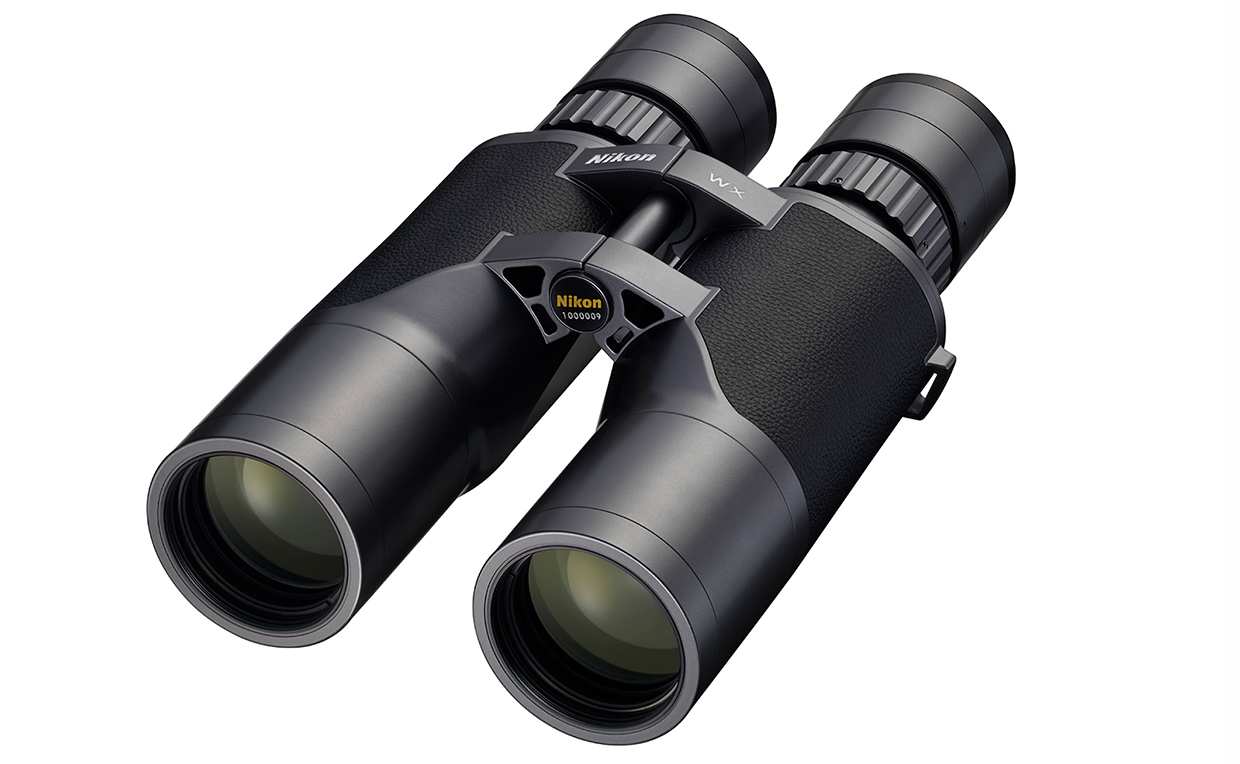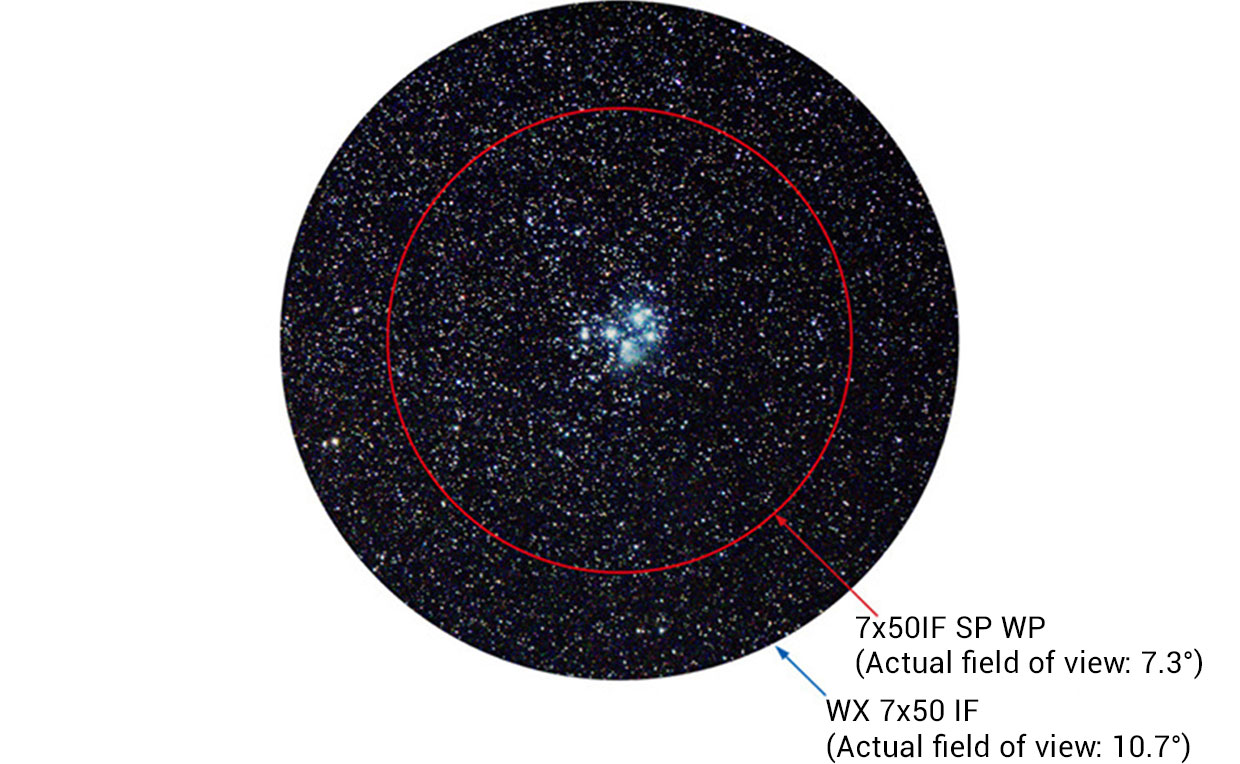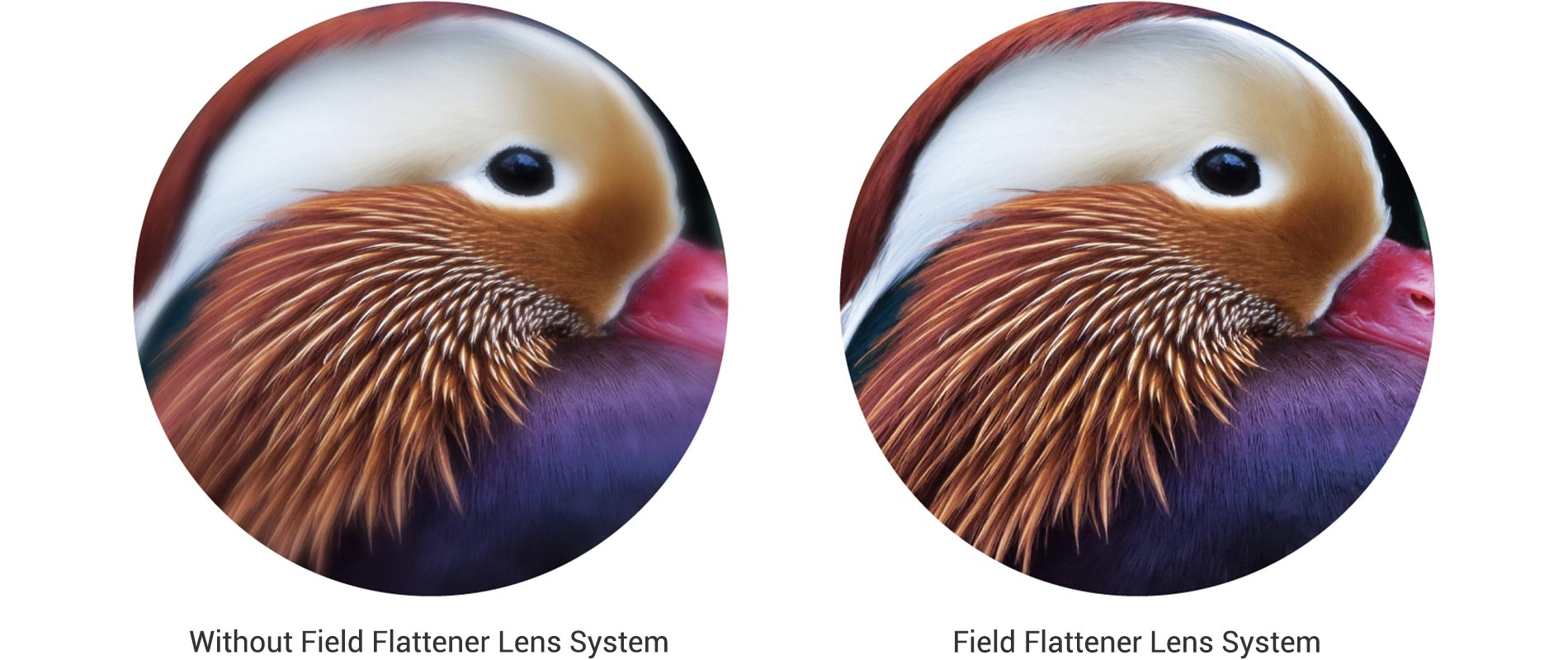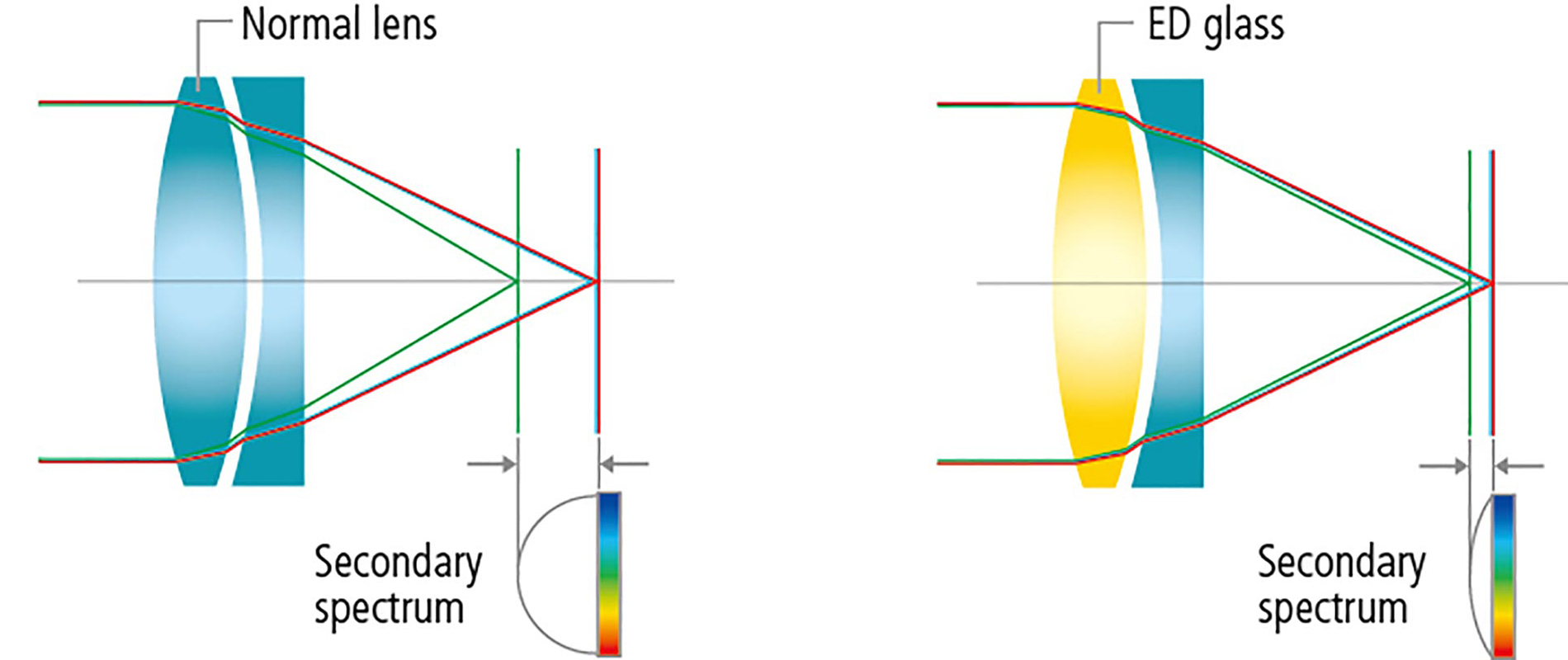Binoculars
Providing diverse optical technologies.
Supporting the enjoyment of viewing; Nikon's starting point.

Nikon binoculars are highly acclaimed for their superior image quality. This is realized by Nikon's comprehensive optical technologies. For example, a super-wide field of view is achieved through superior optical design with a "Field Flattener Lens System" that provides sharp and clear images all the way to the lens periphery. "Extra-low dispersion (ED) glass" effectively compensates chromatic aberration employing Nikon's optical glass manufacturing techniques.
Nikon's wide-ranging technological power helps to deliver the most memorable and emotional viewing experiences in a broad spectrum of situations such as stargazing, birdwatching, marine observation, climbing, nature watching, travel, sports spectating, and theater.
Advanced optical design
The larger the diameter of the eyepiece, the wider the field of view, making it easier to look across the entire field of view. However, the diameter of the eyepiece cannot be wider than human interpupillary distance (the distance between the centers of the left and right eyes). This is because the eyepieces would touch each other. Therefore, Nikon has devised a number of lenses that compose the eyepiece, with a combination of lenses and lens curvatures that prevents the eyepiece diameter from increasing.
With such an extremely advanced optical design, the WX binoculars, for example, achieved a super-wide field of view (apparent field of view of 66.6° for WX 7x50 IF, 76.4° for WX 10x50 IF). Also, minimizing astigmatism and coma aberration to the utmost, the sharpness of the image at the center of the field is maintained all the way to the periphery of this super-wide field of view. Without perceiving the frame, you can experience a feeling as if you are spacewalking into the starry sky.

* Simulated image
Field Flattener Lens System
In the case of a lens fully compensated for coma aberration and astigmatism, the light rays coming from a point apart from the optical axis are focused at one point. But this point is not always included in the vertical plane to the optical axis. This is called curvature of field. With a lens producing this aberration, when focusing on the center of the field, the periphery of the field appears out of focus. This can cause very negative effects especially on wide-field-type binoculars.
Nikon's Field Flattener Lens System is an optical system that minimizes the curvature of field across the entire optical system. This advanced lens design provides consistent, edge-to-edge sharpness while compensating astigmatism and coma aberration at the same time. Observation can be enjoyed with a sharp and clear image throughout the entire field of view.

ED glass element
Visible light is composed of various wavelengths. Gathering these into a precise point is the ideal result for objective lenses.
With a single lens, because light is bent in the same way as with a prism, the focal lengths of different light wavelengths vary. As a result, not all light rays reach exactly the same point, which causes chromatic aberration.
An achromatic lens made with conventional glass materials can match focal lengths of two different wavelengths. For red and blue colors, for example, that contain both ends of the wavelengths of visible light, chromatic aberration can be reduced to a certain extent by conforming their focal lengths. However, with more detailed examination, because light with other wavelengths such as green has different focal lengths, residual chromatic aberration results. This residual chromatic aberration is known as secondary spectrum.
Combinations of conventional glasses cannot solve this secondary spectrum problem, so particular optical materials which have a unique characteristic of dispersion are needed.
ED (Extra-low Dispersion) glass has this unique characteristic and when combined with other glasses minimizes the effects of the secondary spectrum. Compared to achromatic lenses, ED glass reduces chromatic aberration to a remarkable degree.

Product Technology
- Digital SLR cameras
- Mirrorless cameras
- Binoculars
- FPD Lithography Systems
- Semiconductor Lithography Systems
- Alignment Station
- Super Resolution Microscopes
- Ultra-Wide Field Retinal Imaging Device
- Video Measuring Systems
- Industrial X-ray/CT Inspection Systems
- Non-Contact Large-Volume Inspection System
